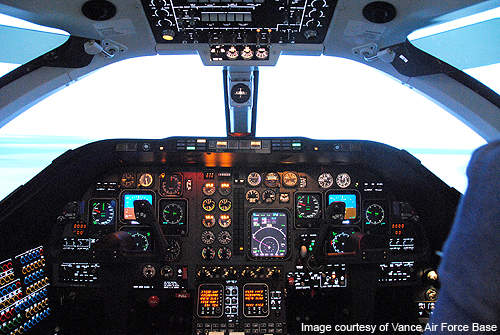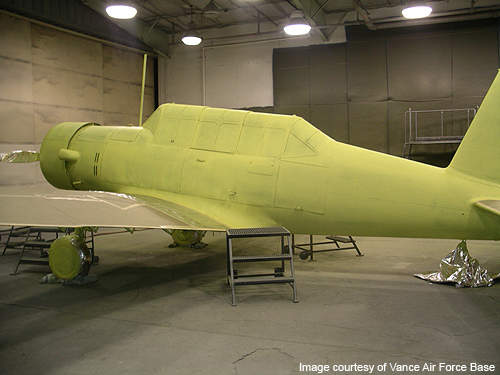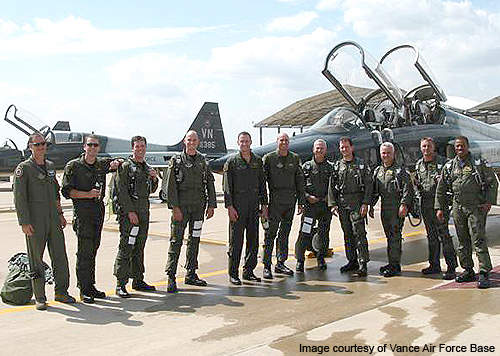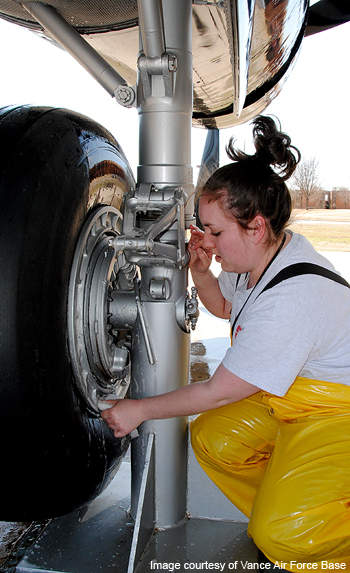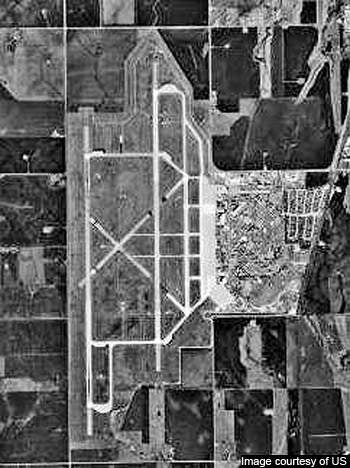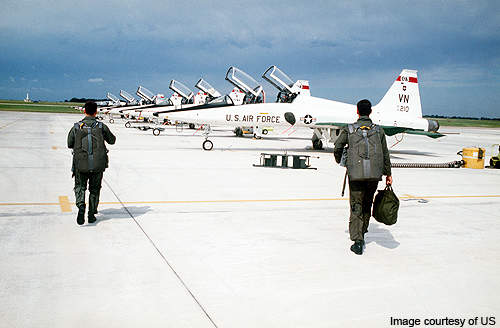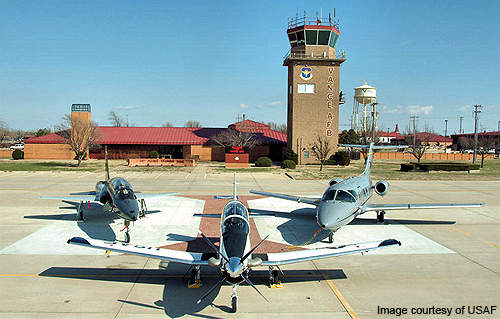Vance Air Force Base (IATA code: END) is a military training base situated 84mi (135km) from Oklahoma city, US. It is the second radar approach control (RAPCON) facility in the US. The base is owned by the US Air Force (USAF) and operated by Air Education and Training Command (AETC).
History of the Vance Air Force Base
Vance Air Force Base was established on a 4,934-acre site in November 1941 under the name of Air Corps Basic Flying School for the US Army Air Force (AAF), which was used to develop aviation cadets for WWII. The base was handed over to AAF’s Gulf Coast Training Centre in December 1941, where the AAF Pilot School was activated to teach basic flight training using Fairchild PT-19 trainers.
The school was renamed the Enid Army Flying School, or Woodring Field, in February 1942. The field was shut down in July 1945 after the end of the war in Europe and its control was transferred to the Army Corps of Engineers in July 1946.
The Woodring Field reopened in January 1948 with the name Enid Air Force Base to render advance training for cadets in multi-engine aircraft. It was renamed ‘Vance Air Force Base’ in July 1949 in honour of WWII martyr Leon Robert Vance, Jr. The 71st Flying Training Wing (71 FTW) was activated at the base in November 1972.
A specialised undergraduate pilot training (SUPT) was initiated at the base in July 1995 to carry out flight training missions with T-1 Jayhawk, T-37 Tweet and T-38 Talon aircraft. The introduction of Joint Primary Aircraft Training System (JPATS) at the base in 2005 allowed the 71 FTW to supersede its T-37 with advance T-6 Texan II.
Design and construction of Vance Air Force Base
The war department unveiled a plan worth more than $4m to build the Vance Air Force Base in August 1941. Construction of the base began one month earlier in July 1941 and was completed in November 1941. The environmental footprint is expected to be decreased by 20% by 2020.
The US Department of Defense awarded a $482m contract to Computer Science Corporation (CSC) in February 2008 to render technical support and maintenance services to the AETC deployed at the Vance Air Force Base for six months.
A $2.8m consolidated skills development centre is in the design phase. In August 2011, a 68,000ft2 Armed Forces Reserve Centre (AFRC) was opened for the US Army Reserve and Oklahoma National Guard at a cost of $20m. The prime construction contractor for the AFRC was TCI Construction.
Construction of a fuel cell maintenance hangar was completed in 2010 at a cost of $7.7m. In the same year, the RAPCON underwent renovation to shift from analogue to digital radar technology. Taxiways, runways, a flight line perimeter fence and the base tennis court were upgraded.
The Vance Air Force Base is one of six air force bases involved in the AETC military housing privatisation project, which comprises 31 demolished units, 145 renovated houses, 54 unchanged units and 30 new homes. Hunt is the prime contractor involved in the privatisation project.
Garrison facilities
The Vance Air Force Base serves as the headquarters for AETC, which comprises the 71st Flying Training Wing (71 FTW).
The 71 FTW executes SUPT for the USAF, the US Navy, the US Marine Corps and allied forces. It is organised into three groups, namely 71st Operations Group (71 OG), 71st Mission Support Group (71 MSG) and 71st Medical Group (71MG).
The 71st Medical Group’s medical support squadron and medical operations squadron render healthcare services at the base.
Other flight training squadrons assigned to the base include the 5th, 8th, 25th, 32nd and the 33rd. The base also houses 3rd Fighter Training, 71st Operations Support, 71st Logistics Readiness, 71st Communications, 71st Force Support and 71st Security Force and 71st Comptroller (71 CPTS) squadrons.
Air facilities
The base has two 2,805m-long macadam-paved runways. It also features a third 1,531m runway, which is surfaced with concrete.
The base can accommodate BT-13 Valiant, T-41 Mescalero, T-33 Shooting Star, T-28 Trojan, T-6A Texan, T-37, T-38 Talon and T-1A Jayhawk aircraft to carry out pilot training.
Control tower
A new 6,665ft² air traffic control (ATC) tower worth $9.5m was built by Peter R Brown Construction. It was opened in March 2016.
US Defence Sector – Market Opportunity & Entry Strategy, Analyses and Forecasts to 2015
This project forms part of our recent analysis and forecasts of the global military aircraft market available from our business information platform Strategic Defence Intelligence. For more information click here or contact us: EMEA: +44 20 7936 6783; Americas: +1 415 439 4914; Asia Pacific: +61 2 9947 9709 or via email.

